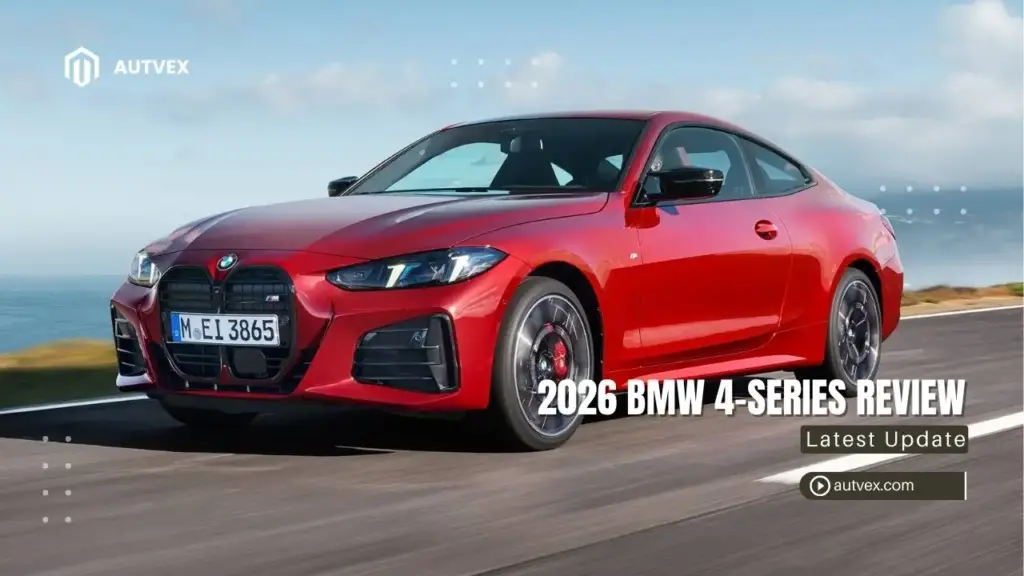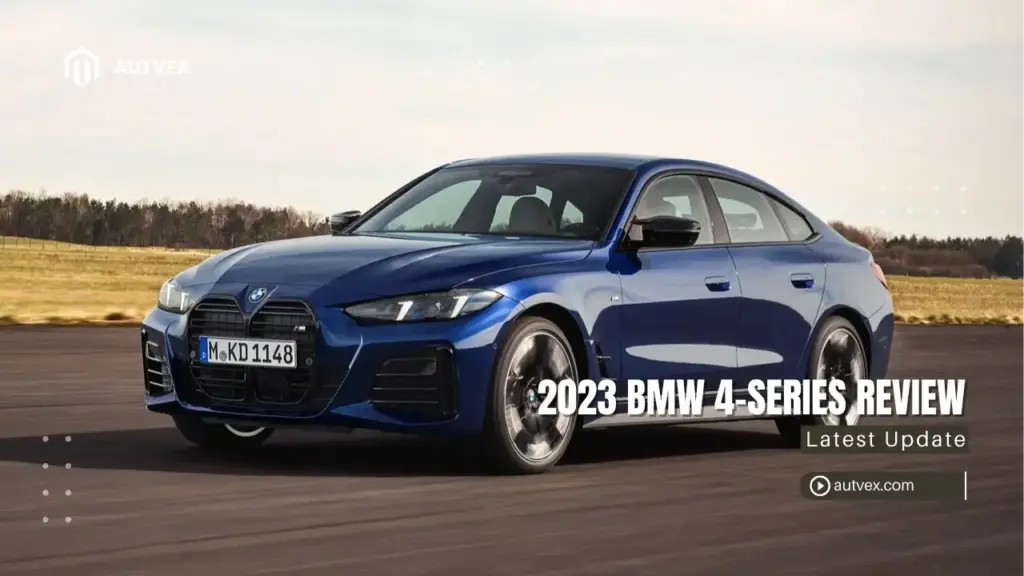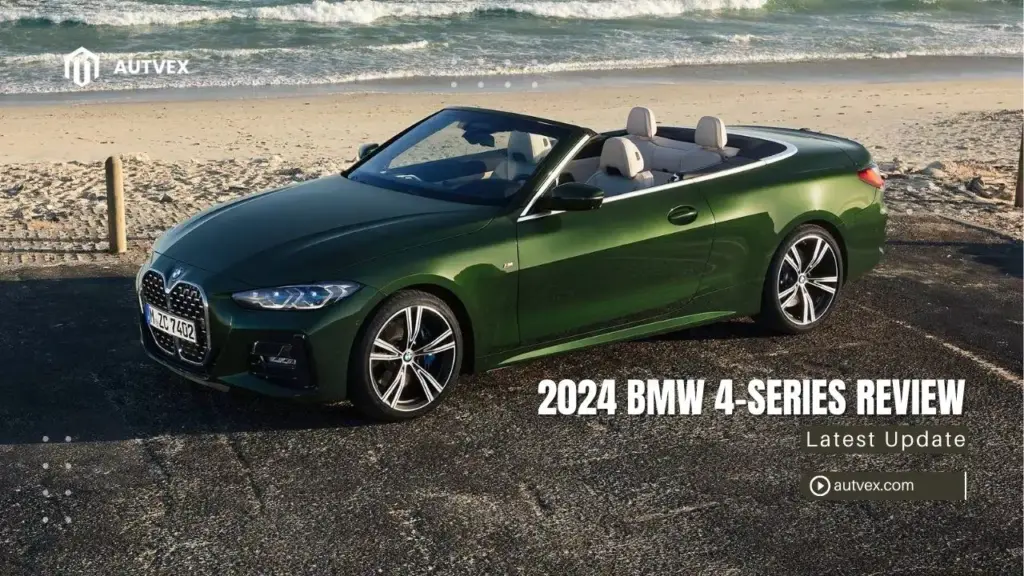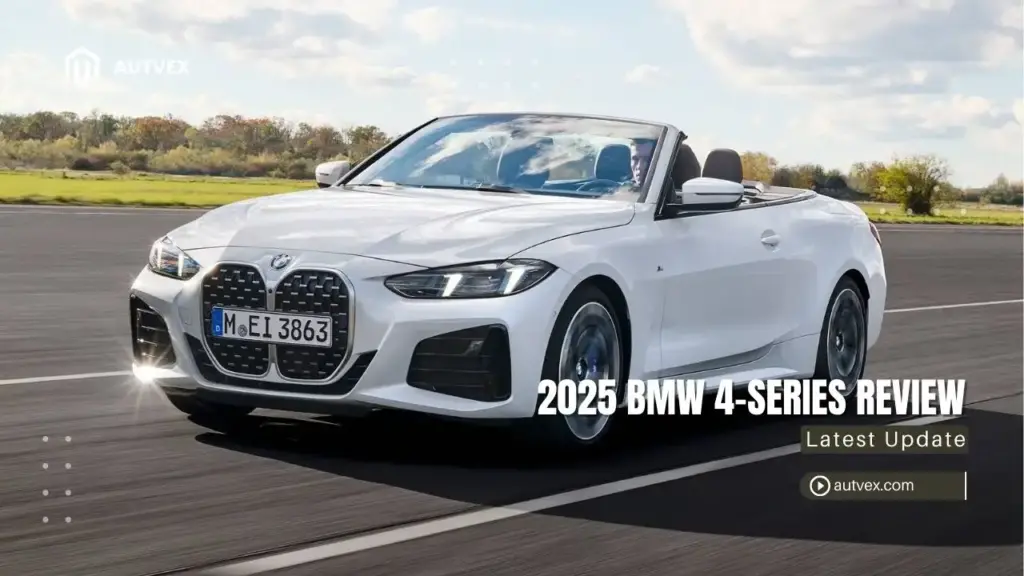You may also like:
The 2026 BMW 4-Series remains a compelling luxury coupe choice, starting at $52,600 for the 430i and $66,300 for the M440i, offering refined performance and updated technology while maintaining its controversial yet distinctive design[1]. This year brings subtle updates including streamlined navigation software and enhanced infotainment features, making it a strong contender in the competitive luxury coupe segment.
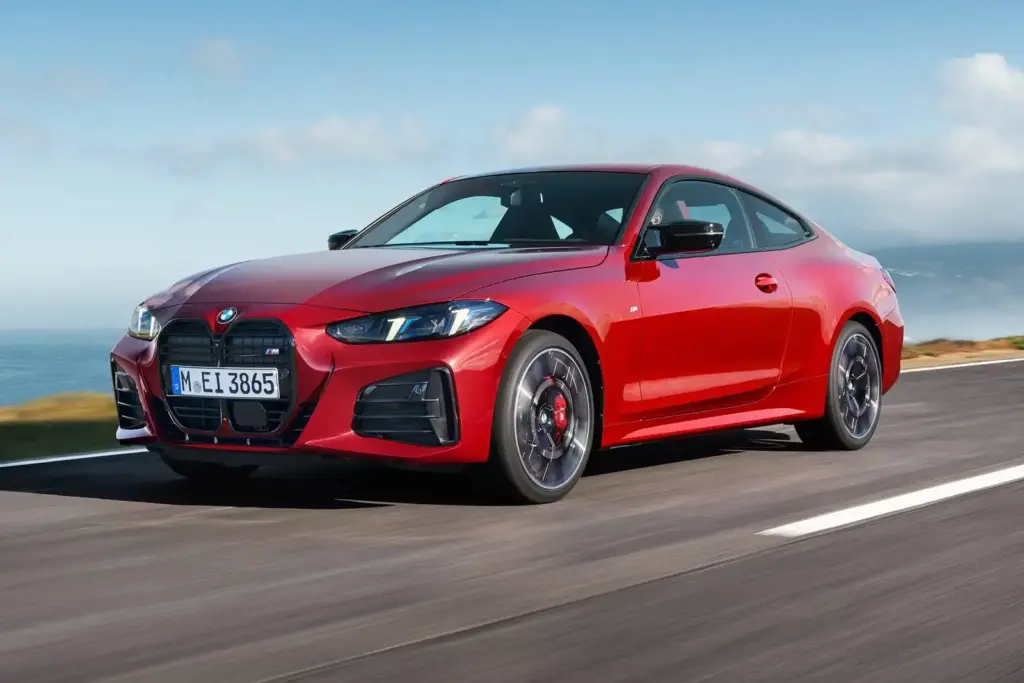
2026 BMW 4-Series Overview & What’s New
Key Changes from 2025 Model Year
The 2026 model year brings minimal but meaningful updates to the 4-Series lineup[1]. The most significant improvement is the updated BMW Operating System 8.5 infotainment, which features streamlined navigation software designed to be more intuitive than previous iterations[1]. Additionally, BMW has refined suspension tuning and steering calibration based on customer feedback from previous model years.
2026 Model Year Updates:
- Enhanced navigation system with streamlined, more intuitive software
- Refined suspension tuning for improved ride quality
- Updated steering calibration for better road feel
- New paint color options and interior trim selections
- Improved 48-volt mild hybrid integration across all models
Model Lineup & Body Styles
The 2026 4-Series maintains its three distinct body styles, each targeting different luxury buyer preferences[2]. Understanding the lineup structure helps buyers identify the best fit for their needs and budget.
| Body Style | 430i Starting Price | M440i Starting Price | Key Features |
|---|---|---|---|
| Coupe | $52,600 (RWD) / $54,600 (AWD) | $66,300 (RWD) / $68,300 (AWD) | Classic 2-door design, 15.5 cu ft trunk |
| Convertible | $59,400 (RWD) / $61,400 (AWD) | $74,400 (RWD) / $76,400 (AWD) | Soft-top design, 10.6 cu ft cargo space |
| Gran Coupe | $55,200 (RWD) / $57,200 (AWD) | $69,900 (RWD) / $71,900 (AWD) | 4-door coupe style, enhanced practicality |
The xDrive all-wheel drive system adds a consistent $2,000 premium across all trim levels, providing enhanced traction and stability for American drivers in varying weather conditions[1].
Target Buyer Profile
The 2026 BMW 4-Series appeals to a specific demographic of American luxury car buyers who prioritize style and performance over maximum practicality. These buyers typically include performance-focused luxury enthusiasts who want a daily driver that delivers excitement, style-conscious professionals seeking a premium vehicle that makes a statement, and buyers considering alternatives to the Audi A5 and Genesis G70 who want distinctive BMW driving dynamics.
Ideal 4-Series Buyers:
- Income range: $75,000+ annually
- Age demographic: 35-55 years old
- Lifestyle: Urban/suburban professionals
- Priorities: Performance, technology, brand prestige
- Usage: Daily commuting with weekend spirited driving
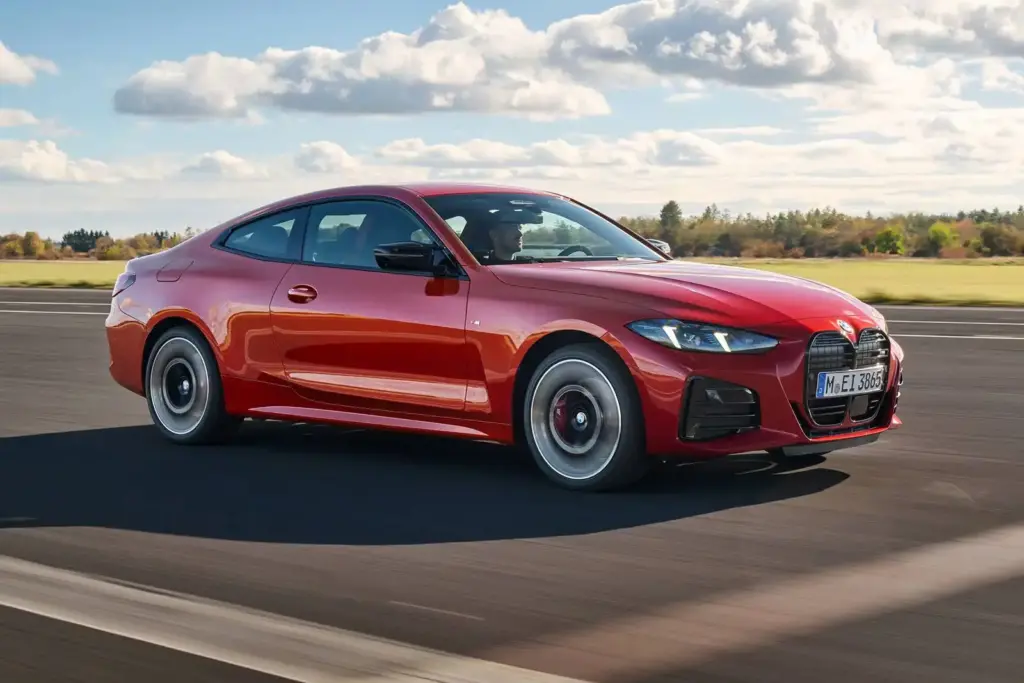
2026 BMW 4-Series Engine Performance & Specs
430i 2.0L Turbo Four-Cylinder
The base 430i model features BMW’s refined 2.0-liter turbocharged four-cylinder engine, producing 255 horsepower and 295 lb-ft of torque[1]. This powerplant incorporates BMW’s latest TwinPower turbocharging technology, direct injection, Valvetronic variable valve control, and Double-VANOS variable camshaft timing for optimal performance and efficiency[3].
430i Performance Specifications:
- Engine: 2.0L turbocharged 4-cylinder with 48-volt mild hybrid
- Power output: 255 horsepower @ 6,500 RPM
- Torque: 295 lb-ft @ 1,550 RPM
- 0-60 mph (RWD): 5.6 seconds
- 0-60 mph (xDrive): 5.4 seconds[3]
- Fuel economy: Up to 36 mpg highway[3]
The 48-volt mild hybrid system provides additional low-end torque assistance, particularly benefiting step-off performance and fuel efficiency in city driving conditions.
M440i 3.0L Turbo Inline-Six
The M440i represents the performance pinnacle of the standard 4-Series lineup, featuring BMW’s legendary 3.0-liter turbocharged inline-six engine[1]. This powerplant delivers 386 horsepower and 398 lb-ft of torque, with the 48-volt mild hybrid system contributing 11 additional horsepower during acceleration.
| Specification | M440i RWD | M440i xDrive |
|---|---|---|
| 0-60 mph | 4.6 seconds | 4.2 seconds[3] |
| Peak torque RPM | 1,900 RPM | 1,900 RPM |
| Estimated range | 560 miles | 540 miles |
| Premium fuel required | Yes (91+ octane) | Yes (91+ octane) |
| Braking (70-0 mph) | 148 feet | 150 feet[1] |
The M440i includes exclusive performance enhancements such as 19-inch wheels, M Sport suspension, rear differential upgrade, and a rear spoiler as standard equipment[1].
Transmission & Drivetrain Options
Both engine options pair exclusively with BMW’s refined 8-speed automatic transmission, which provides smooth shifts and optimal gear ratios for both performance and efficiency[1]. The transmission features multiple driving modes, including Sport and Eco Pro settings that adjust shift patterns and throttle response.
Drivetrain Features:
- Standard transmission: 8-speed automatic with paddle shifters
- xDrive AWD: Available on all models (+$2,000)
- Driving modes: Eco Pro, Comfort, Sport, Sport+
- Launch control: Standard on M440i models
- Electronic differential: Rear differential on M440i
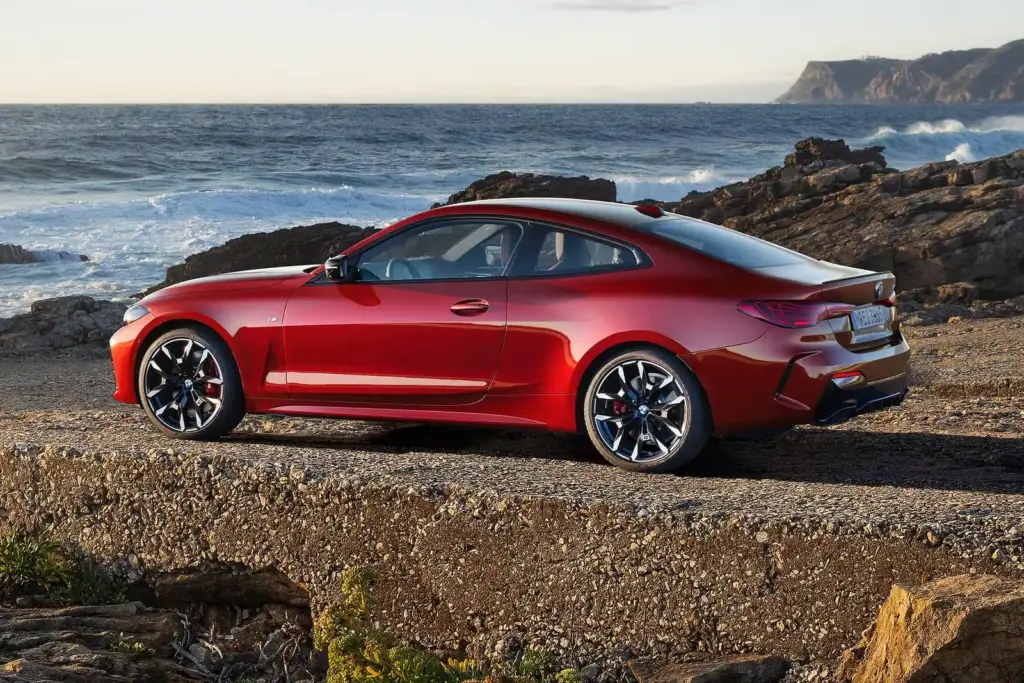
2026 BMW 4-Series Interior Features & Technology
Cabin Design & Space
The 2026 4-Series interior closely mirrors the successful 2026 BMW 3-Series design philosophy, though the coupe’s lower roofline creates a more intimate cabin atmosphere[1]. Front seat occupants enjoy generous space and supportive seating, while rear passengers face more limited headroom and legroom compared to the 3-Series sedan.
Interior Space Specifications:
- Front headroom: 38.4 inches
- Front legroom: 42.0 inches
- Rear headroom: 36.1 inches (limited by coupe roofline)
- Rear legroom: 33.4 inches
- Passenger capacity: 4 adults (coupe), 5 adults (Gran Coupe)
The cabin features premium materials throughout, including standard leather-free upholstery, ambient lighting, and dual-zone automatic climate control[2]. M440i models upgrade to a faux-leather wrapped dashboard and enhanced interior trim pieces.
Infotainment & Connectivity
The 2026 model features BMW’s latest infotainment technology, centered around a large 14.9-inch touchscreen display and a 12.3-inch digital instrument cluster[2]. This system represents a significant improvement over previous generations, with faster processing speeds and more intuitive menu structures.
| Technology Feature | Standard (430i) | Enhanced (M440i) |
|---|---|---|
| Main display | 14.9-inch touchscreen | 14.9-inch touchscreen |
| Instrument cluster | 12.3-inch digital | 12.3-inch digital |
| Wireless charging | Standard | Standard |
| Apple CarPlay/Android Auto | Wireless | Wireless |
| BMW Intelligent Assistant | Standard | Enhanced with gesture control |
| Premium audio | 10-speaker | 16-speaker Harman Kardon |
The updated navigation system includes real-time traffic data, predictive routing, and integration with smartphone apps for seamless connectivity[1].
Cargo Space & Practicality
While the 4-Series prioritizes style over maximum utility, it still offers reasonable cargo capacity for a luxury coupe. The standard coupe provides 15.5 cubic feet of trunk space, sufficient for weekend trips or daily commuting needs[2].
Cargo Specifications by Body Style:
- Coupe trunk: 15.5 cubic feet
- Convertible cargo: 10.6 cubic feet (top up), 8.8 cubic feet (top down)
- Gran Coupe trunk: 15.5 cubic feet with rear seat accessibility
- Rear seat folding: 40/20/40 split (Gran Coupe only)
Daily usability considerations include limited rear seat access in the coupe, narrow door openings, and a relatively high loading floor that may challenge some users.
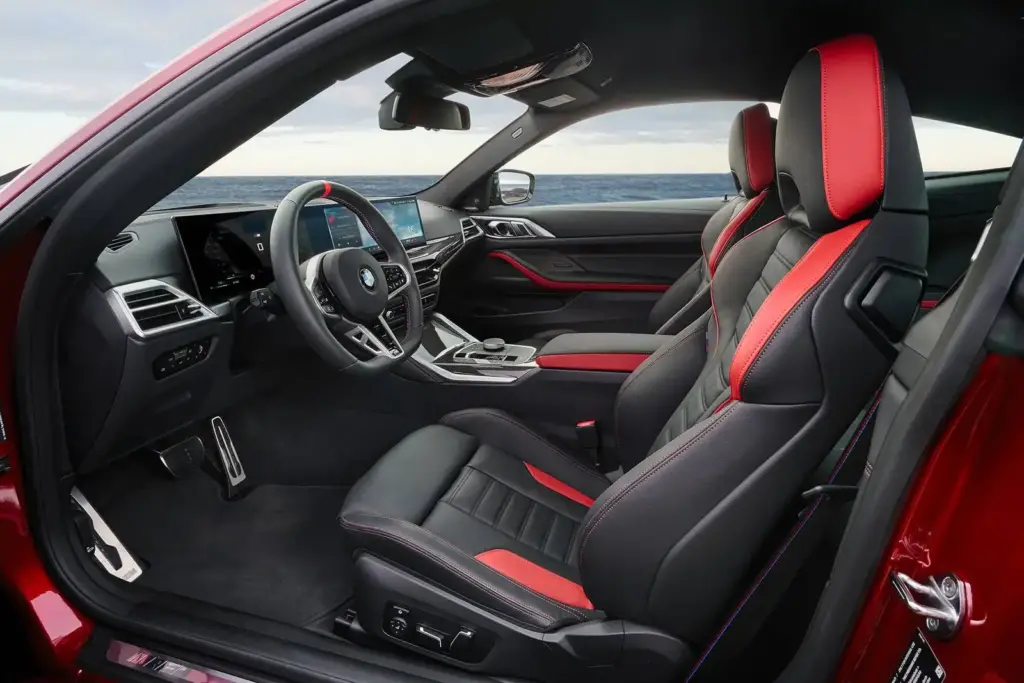
Exterior Style & Design Elements
Signature BMW 4-Series Styling
The 2026 4-Series maintains BMW’s controversial yet distinctive design language, featuring the prominent kidney grille that has sparked significant debate among enthusiasts[1]. Despite mixed opinions, the design successfully differentiates the 4-Series from competitors and creates a bold visual presence.
Key Design Elements:
- Kidney grille: Large, prominent front grille design
- LED headlights: Standard adaptive LED technology
- Coupe proportions: Low, athletic stance with long hood
- Character lines: Sharp, defined body creases
- Aerodynamic features: Active grille shutters, underbody panels
The design philosophy emphasizes performance and athleticism, with every line contributing to the vehicle’s dynamic appearance and aerodynamic efficiency.
Available Color Options
BMW offers an extensive palette of exterior colors for the 2026 4-Series, ranging from traditional metallics to bold Individual finishes[2]. The color selection allows buyers to personalize their vehicle while maintaining resale value considerations.
| Color Category | Available Options | Premium Cost |
|---|---|---|
| Solid colors | Alpine White (no charge) | $0 |
| Metallic paints | 8 options including Storm Bay, Mineral Grey | $550 |
| BMW Individual | Tanzanite Blue II, Barcelona Blue | $1,950+ |
| Matte finishes | Brooklyn Grey, Frozen Black | $6,000+ |
Popular choices among American buyers include Storm Bay metallic, Mineral Grey, and the no-cost Alpine White, which maintains strong resale values across all regions.
M Sport Package & Styling Upgrades
The M Sport Package transforms the 4-Series appearance with aggressive styling elements that enhance the vehicle’s performance-oriented character[1]. This package is standard on M440i models and available as an option on 430i variants.
M Sport Package Components:
- Front bumper: More aggressive air intake design
- Side skirts: Enhanced aerodynamic body panels
- Rear bumper: Integrated diffuser with sport exhaust tips
- Wheels: 19-inch M light alloy wheels
- Suspension: M Sport suspension with adaptive dampers
- Interior: M Sport steering wheel and pedals
Carbon fiber accent options include mirror caps, rear spoiler, and interior trim pieces, adding $1,200-$2,500 depending on the selected components[2].
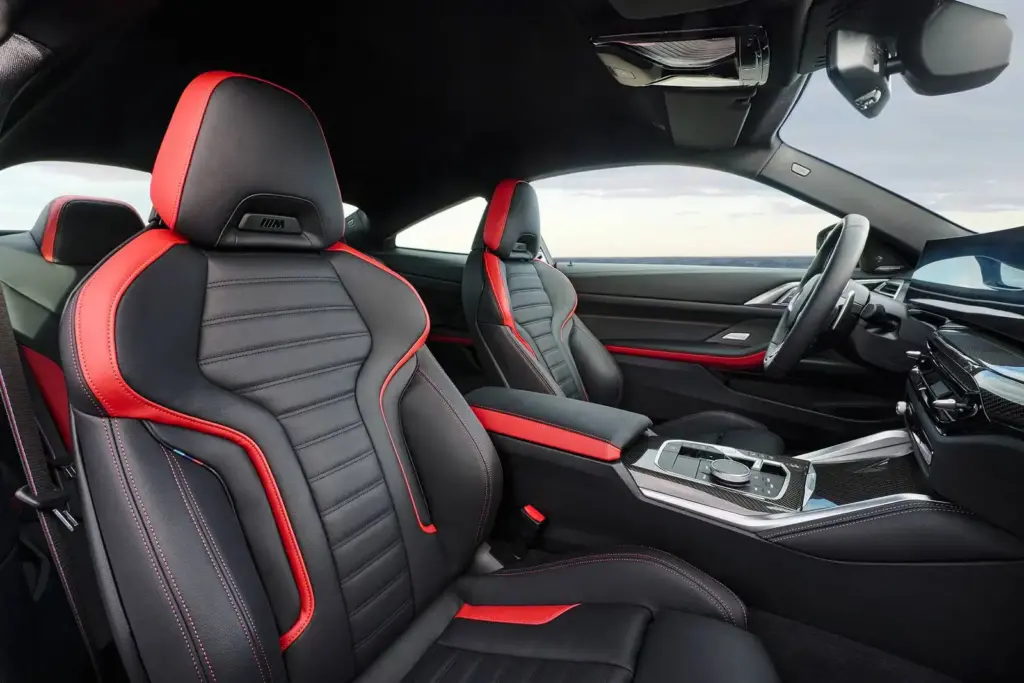
2026 BMW 4-Series Pricing & Value Analysis
Starting MSRP by Trim Level
The 2026 BMW 4-Series pricing structure reflects its position in the luxury market, with starting prices that compete directly against Audi A5 and Genesis G70 models[1]. Understanding the pricing hierarchy helps buyers identify the best value proposition for their needs.
| Trim Level | RWD Price | xDrive AWD Price | Price Premium |
|---|---|---|---|
| 430i Coupe | $52,600 | $54,600 | $2,000 |
| 430i Convertible | $59,400 | $61,400 | $2,000 |
| 430i Gran Coupe | $55,200 | $57,200 | $2,000 |
| M440i Coupe | $66,300 | $68,300 | $2,000 |
| M440i Convertible | $74,400 | $76,400 | $2,000 |
| M440i Gran Coupe | $69,900 | $71,900 | $2,000 |
All prices include destination charges but exclude taxes, registration fees, and dealer-installed accessories[4].
Key Options & Packages Cost
BMW’s options strategy allows extensive customization, though costs can quickly escalate beyond the base MSRP[1]. The most popular packages among American buyers provide significant feature upgrades at competitive prices.
Popular Options Pricing:
- M Sport Package (430i): $3,400
- Premium Package: $2,100 (heated steering wheel, premium audio)
- Technology Package: $1,900 (head-up display, wireless charging)
- Driver Assistance Package: $1,400 (adaptive cruise, parking assist)
- Harman Kardon Audio: $875
- Sunroof: $1,200 (coupe only)
Total cost of ownership considerations include maintenance costs averaging $1,200 annually, premium fuel requirements, and insurance rates that typically run 15-20% higher than non-luxury vehicles[4].
Lease vs Buy Recommendations
Current BMW Financial Services offers competitive lease and purchase financing, with interest rates varying based on credit qualification and regional incentives[1]. The decision between leasing and buying depends on individual financial circumstances and usage patterns.
Lease Considerations:
- Typical lease terms: 36 months, 10,000 miles annually
- Money factor: 0.00159 (equivalent to 3.8% APR)
- Residual values: 58-62% depending on trim level
- Current incentives: $2,000 lease cash on select models
Purchase Benefits:
- Depreciation rates: 35-40% over first three years
- Resale values: Strong in luxury coupe segment
- Ownership flexibility: No mileage restrictions
- Modification freedom: Personalization options
Best value analysis suggests the 430i xDrive Coupe with Premium Package offers optimal feature-to-price ratio for most American buyers.
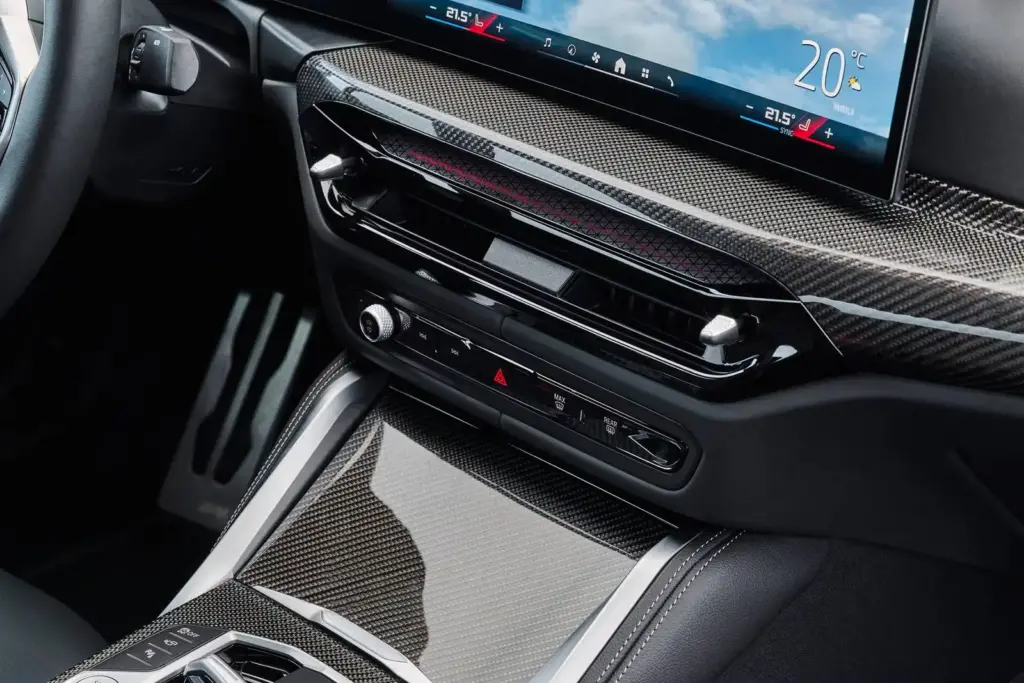
Safety Features & Driver Assistance
Standard Safety Equipment
The 2026 BMW 4-Series includes comprehensive safety systems as standard equipment, reflecting modern safety expectations and regulatory requirements[5]. These features provide protection and accident avoidance capabilities for American driving conditions.
Standard Safety Systems:
- Forward collision warning with pedestrian and cyclist detection
- Automatic emergency braking with city collision mitigation
- Lane departure warning with lane-keeping assist
- Blind spot monitoring with rear cross-traffic alert
- Parking sensors front and rear with visual display
- Automatic high beams with adaptive headlight function
The safety suite represents BMW’s commitment to achieving top safety ratings while maintaining the engaging driving experience that defines the brand[5].
Available Advanced Safety Tech
Premium safety features are available through option packages, providing enhanced protection and convenience for daily driving[2]. These systems utilize advanced sensors and cameras to monitor the driving environment continuously.
| Safety Feature | Availability | Package Cost |
|---|---|---|
| Adaptive cruise control | Driver Assistance Package | $1,400 |
| Parking Assistant Plus | Driver Assistance Package | Included |
| Surround-view camera | Driver Assistance Package | Included |
| Active lane change assist | Driver Assistance Package | Included |
| Traffic jam assistant | Driver Assistance Package | Included |
| Speed limit recognition | Standard | $0 |
These systems work together to provide semi-autonomous driving capabilities in highway and parking situations[2].
Crash Test Ratings & Reliability
The BMW 4-Series has historically performed well in safety evaluations, though specific 2026 model year ratings are pending from NHTSA and IIHS[5]. Previous generation models achieved five-star overall ratings with particular strength in adult occupant protection.
Expected Safety Performance:
- NHTSA overall rating: 5 stars (estimated)
- IIHS Top Safety Pick: Likely qualification
- Adult occupant protection: Excellent (97% Euro NCAP)[5]
- Vulnerable road users: Very good (93% Euro NCAP)
Reliability data from sources like Autvex suggests the 4-Series maintains above-average dependability, with the mechanically similar 3-Series achieving a 96.4% reliability score[6]. Common issues include electrical problems and infotainment glitches, typically resolved under warranty.
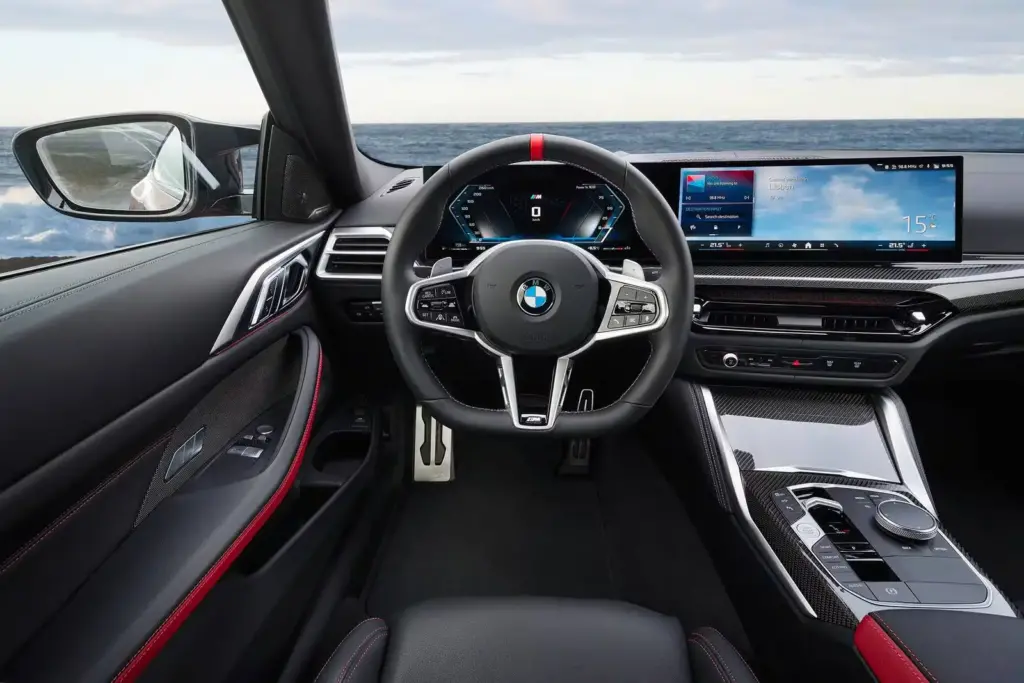
2026 BMW 4-Series vs Competition
vs Audi A5 Sportback
The Audi A5 represents the 4-Series’ most direct competitor, offering similar luxury credentials and performance capabilities[1]. Both vehicles target affluent buyers seeking style and driving engagement over maximum practicality.
| Comparison Factor | BMW 4-Series | Audi A5 Sportback |
|---|---|---|
| Starting price | $52,600 | $54,400 |
| Base engine power | 255 HP | 248 HP |
| 0-60 mph (base) | 5.6 seconds | 5.8 seconds |
| Cargo space | 15.5 cu ft | 16.7 cu ft |
| Warranty | 4yr/50k miles | 4yr/50k miles |
| Infotainment | 14.9-inch screen | 12.3-inch screen |
The BMW offers superior performance and newer technology, while the Audi provides slightly more cargo space and a more conservative design approach[1].
vs Genesis G70 Coupe
The Genesis G70 offers compelling value with luxury features and strong performance at a lower price point[7]. However, the brand lacks BMW’s established dealer network and resale value stability in American markets.
Key Differences:
- Price advantage: Genesis starts $4,000 lower
- Warranty coverage: Genesis offers 10yr/100k mile powertrain
- Performance parity: Similar acceleration and handling capabilities
- Technology gap: BMW leads in infotainment and driver assistance
- Brand prestige: BMW maintains stronger luxury positioning
- Dealer network: BMW offers superior service availability
vs Mercedes-Benz C-Class Coupe
The Mercedes C-Class Coupe emphasizes luxury comfort over driving dynamics, creating distinct positioning differences[1]. American buyers often cross-shop these models despite their different personalities.
Comparison Highlights:
- Interior quality: Mercedes edges BMW in material richness
- Driving dynamics: BMW provides more engaging handling
- Technology integration: BMW leads in user interface design
- Ride comfort: Mercedes offers superior highway refinement
- Performance variants: Both offer high-performance alternatives (M4, AMG C63)
The choice often comes down to personal preference between BMW’s sport-oriented approach and Mercedes’ luxury-focused philosophy.
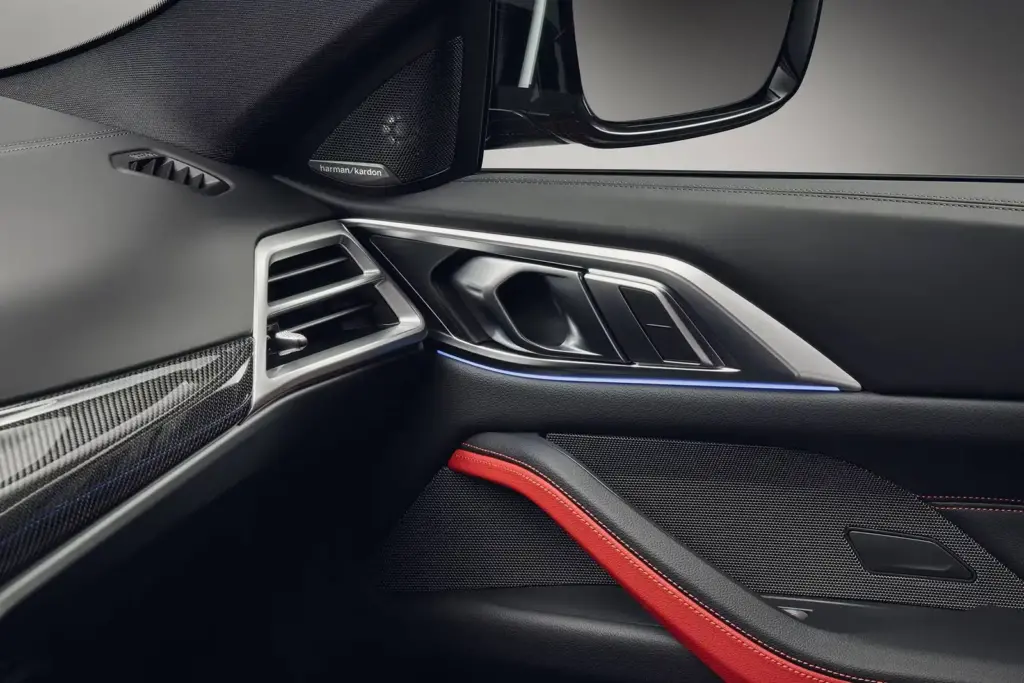
Should You Buy the 2026 BMW 4-Series?
Best Use Cases & Ideal Buyers
The 2026 BMW 4-Series excels in specific scenarios that align with its design priorities and capabilities[1]. Understanding these use cases helps potential buyers determine if the 4-Series matches their lifestyle and needs.
Optimal Use Scenarios:
- Daily commuting: Excellent for highway driving and urban navigation
- Weekend recreation: Strong performance for spirited driving experiences
- Professional image: Premium brand presence for business use
- Empty nesters: Ideal for couples who prioritize style over family space
- Second vehicle: Perfect as a fun car alongside a practical family vehicle
The vehicle particularly suits buyers who value driving engagement over maximum practicality, appreciate premium technology, and want distinctive styling that stands apart from mainstream luxury sedans.
Potential Drawbacks to Consider
Despite its strengths, the 4-Series presents limitations that may affect certain buyers[1]. Honest evaluation of these drawbacks helps ensure informed purchasing decisions.
Key Limitations:
- Rear seat space: Limited headroom and legroom restrict passenger comfort
- Premium fuel requirement: 91+ octane gasoline increases operating costs
- Maintenance expenses: BMW service costs exceed mainstream brands by 40-50%
- Controversial styling: Polarizing design may affect long-term satisfaction
- Limited cargo space: Trunk space trails SUV alternatives significantly
Cost Considerations:
- Annual maintenance: $1,200-1,800 depending on mileage
- Insurance premiums: 15-20% higher than non-luxury vehicles
- Fuel costs: Premium gasoline adds $200-400 annually
- Depreciation: 35-40% value loss over first three years
Buying Timeline & Availability
Current dealer inventory levels vary significantly across American markets, with popular configurations experiencing longer wait times[1]. Understanding availability patterns helps buyers plan their purchase timing effectively.
Market Conditions:
- Dealer inventory: Generally adequate for most configurations
- Wait times: 6-12 weeks for custom orders
- Popular combinations: M440i xDrive with M Sport Package
- Incentive timing: Best deals typically available in Q4
The 2027 model year refresh timeline suggests minimal changes, making the 2026 model year a stable choice without concerns about immediate obsolescence. Similar to the 2025 BMW 2-Series evolution, BMW tends to maintain consistency in design and features across model years within a generation.
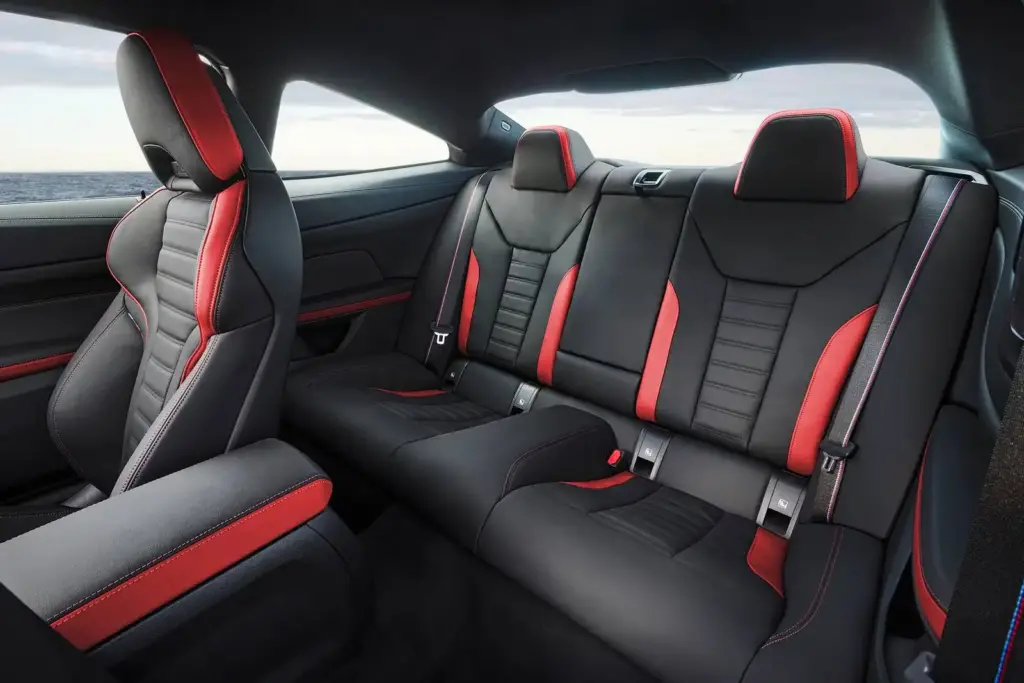
Key Takeaways
- The 2026 BMW 4-Series offers excellent performance value with the M440i delivering 386 horsepower and 4.2-second 0-60 mph times for $68,300 with xDrive
- Technology updates make the 2026 model more user-friendly with streamlined navigation software and enhanced BMW Operating System 8.5 infotainment
- Pricing remains competitive against Audi A5 and Genesis G70, though total ownership costs run higher due to premium fuel and maintenance requirements
- The controversial grille design continues to polarize buyers, making test drives essential to ensure long-term satisfaction with the distinctive styling
- Rear seat space limitations make the 4-Series best suited for couples, empty nesters, or buyers seeking a second fun car rather than primary family transportation
- Strong resale values and BMW’s established dealer network provide ownership advantages over newer luxury brands, though warranty coverage trails Genesis
- Current market conditions favor buyers with reasonable inventory levels and moderate wait times for most configurations
FAQs
How reliable is the 2026 BMW 4-Series?
The 2026 BMW 4-Series demonstrates above-average reliability based on the mechanically similar 3-Series, which achieved a 96.4% reliability score[6]. Common issues include electrical problems and infotainment glitches, typically resolved under BMW’s 4-year/50,000-mile warranty. The 48-volt mild hybrid system adds complexity but uses proven technology from other BMW models.
What’s the difference between 430i and M440i?
The 430i uses a 255-horsepower 2.0-liter turbo four-cylinder engine with 5.4-second 0-60 mph performance, while the M440i features a 386-horsepower 3.0-liter turbo inline-six achieving 4.2-second acceleration[3]. The M440i includes standard M Sport suspension, 19-inch wheels, rear spoiler, and enhanced interior materials, justifying its $13,700 price premium.
Does the BMW 4-Series hold its value well?
BMW 4-Series models typically retain 60-65% of their original value after three years, performing well in the luxury coupe segment[1]. Popular configurations like the M440i xDrive with desirable options maintain stronger resale values, while base 430i models depreciate more quickly. Color choice and maintenance records significantly impact resale performance.
Is xDrive all-wheel drive worth the extra cost?
The $2,000 xDrive upgrade provides enhanced traction and stability, particularly valuable in northern climates or for buyers prioritizing year-round capability[1]. However, rear-wheel drive models offer more engaging driving dynamics and slightly better fuel economy. Most American buyers choose xDrive for peace of mind rather than necessity.
How does the 4-Series compare to the 3-Series sedan?
The 4-Series shares the 3-Series platform but sacrifices rear seat space and cargo capacity for style and lower roofline[1]. Both models offer identical powertrains and technology, though the 4-Series commands a $3,000-5,000 premium over equivalent 3-Series configurations. The 2026 BMW 3-Series provides better practicality for families.
What are the biggest problems with BMW 4-Series?
Historical BMW 4-Series issues include timing chain problems on 2014-2015 models, fuel pump recalls, and electrical system glitches[8]. Current generation models (2021+) show improved reliability, though some owners report infotainment software bugs and sensor malfunctions. Most problems are covered under warranty and resolved through software updates.
Should I wait for the 2027 BMW 4-Series redesign?
BMW typically maintains model generations for 6-7 years, suggesting the current 4-Series design will continue through 2027-2028[1]. The 2026 model includes meaningful technology updates without major styling changes, making it a stable choice. Waiting for the next generation means missing 2-3 years of ownership without significant benefits.
How much does it cost to maintain a BMW 4-Series?
Annual maintenance costs average $1,200-1,800 depending on mileage and service location[4]. BMW’s maintenance program covers scheduled services for the first three years/36,000 miles. Major service intervals occur every 10,000 miles, with costs increasing significantly after warranty expiration. Premium fuel requirements add $200-400 annually compared to regular gasoline vehicles.
References
- Car and Driver. (2025). 2026 BMW 4-Series Review, Pricing, and Specs. https://www.caranddriver.com/bmw/4-series-2026
- BMW USA. (2025). BMW 4 Series Coupe Models. https://www.bmwusa.com/vehicles/4-series/4-series-coupe/bmw-4-series-coupe.html
- Newbold BMW. (2025). Difference Between the 2025 BMW 430i vs. M440i. https://www.newboldbmw.com/mm-2025-bmw-430i-vs-m440i-compare-differences.html
- Edmunds. (2025). 2026 BMW 4 Series M440i Prices, Reviews, and Pictures. https://www.edmunds.com/bmw/4-series/2026/m440i/
- What Car? (2025). Used BMW 4 Series Convertible 2021-present reliability. https://www.whatcar.com/bmw/4-series/sports/used-review/n26371/reliability
- What Car? (2025). BMW 3 Series reliability survey results. https://www.whatcar.com/bmw/4-series/sports/used-review/n26371/reliability
- TrueCar. (2025). 2026 BMW 4 Series Review | Pricing, Trims & Photos. https://www.truecar.com/overview/bmw/4-series/
- Engine Patrol. (2024). 10 Best & Worst BMW 4-Series Years (With Facts & Stats). https://enginepatrol.com/bmw-4-series-best-and-worst-years/

I am a senior automotive analyst at Autvex. Expert vehicle evaluations, in-depth reviews, and objective analysis helping readers make informed automotive decisions with years of industry experience.

